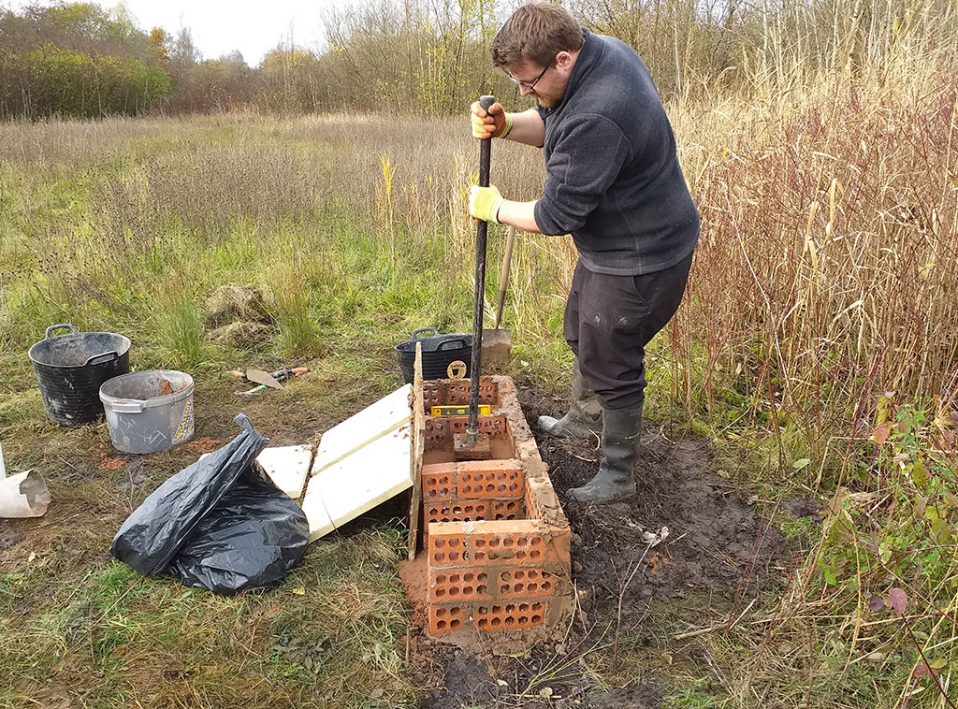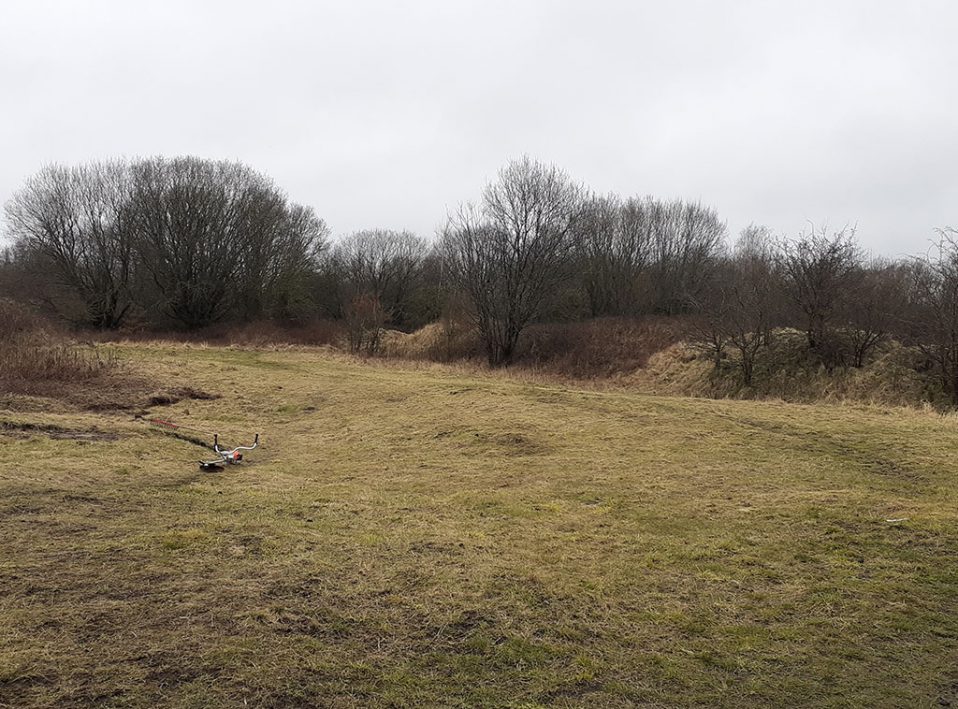The Wigan Flashes team have been creating bee banks for solitary mining bees to nest. Females of bee species such as the Tawny mining bee (Andrena fulva) and Ashy mining bee (Andrena cineraria) among many others will dig out a tunnel on bare slopes and patches of bare ground to lay their eggs. The tunnel is made up of a series of egg chambers, each has one egg and a supply of food to feed the developing larva until it emerges as an adult.
Some of the bee banks are of brick construction, filled with a mix of sand and cement to recreate the favoured firmness of ground for the bees to dig into. The other type are areas where bare ground has been created by stripping off the vegetation on slopes and in some of the flatter areas sand has been added to the surface.
This work has been funded by Biffa Award and is just one part of the work being done to improve the meadows areas for bees and other vitally important pollinators.

A volunteer tamping down (compressing) the sand and cement mix inside the bee bank before the flagstones are fixed on the top.



Recent Comments